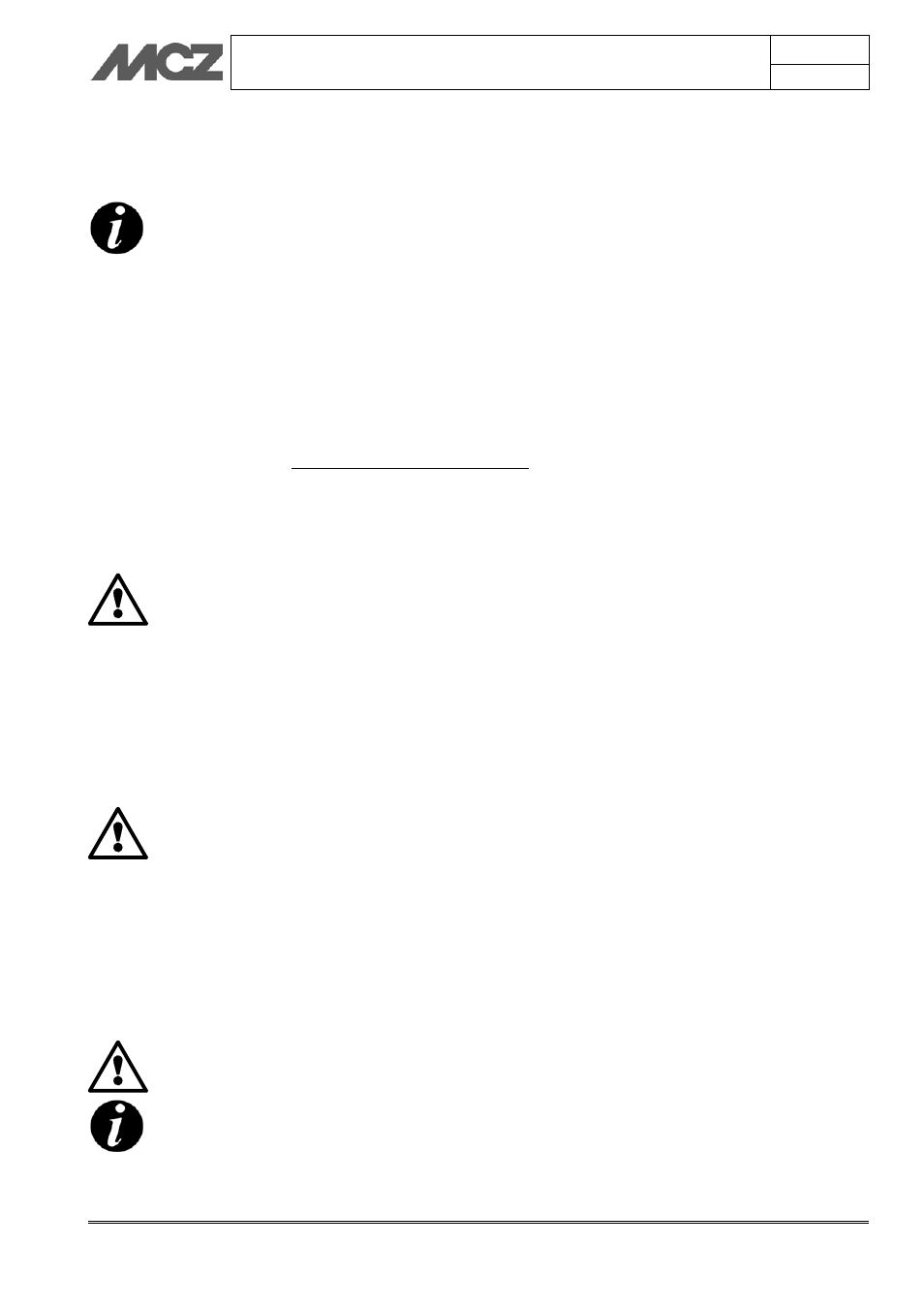Operation – MCZ Vivo 70 Wood User Manual
Page 34

Chapter 6
INSTALLATION AND USE MANUAL
page
34
Operation
Technical service – MCZ Group S.p.A. all rights reserved - Reproduction prohibited
6. OPERATION
6.1. PRE-LIGHTING WARNINGS
Do not touch the fireplace stove when it is lit for the first
time. During this phase, the paint finishes drying and
hardens. If you touch the paint, you may expose the steel
surface.
It is good practice to provide plenty of ventilation in the
room during the initial lighting, as the stove will give off a
small amount of smoke and smell of paint.
If necessary, touch up the paint with the aerosol spray in
the original colour (see “Fireplace stove accessories and
inserts")
Do not stay near the fireplace stove, and as previously mentioned,
ventilate the room. The smoke and the smell of paint will vanish after
about one hour of operation. There are no health risks involved.
During start-up and cooling, the fireplace stove is subject to expansion
and contraction; therefore, you may hear slight creaking noises.
This phenomenon is absolutely normal, the structure being made of
sheet steel, and must not be considered a fault.
It is very important not to bring the stove up to full
heat immediately. Bring it up to temperature
gradually.
This avoids damages to welds and the steel
structure.
Do not demand full heating
performance straight away!
6.2. OPERATING TEST
ATTENTION!!
BEFORE PROCEEDING IN ANY WAY WITH THE
INSTALLATION OF THE CLADDING, CARRY OUT A
GENERAL TEST OF THE FIREPLACE STOVE AS
FOLLOWS:
Before lighting, however, read Chapter 5.
Light the fire at low power to ensure the smoke
connections do not leak smoke or soot.
If you install the forced ventilation kit, check that
all wiring and the control unit are far from the hot
body of the fireplace stove.
MCZ SHALL NOT BE HELD LIABLE FOR ANY DAMAGE
WHICH THE CLADDING MAY SUFFER IF THE
AFOREMENTIONED CONTROLS ARE NOT
PERFORMED AND IT BECOMES NECESSARY TO
DEMOLISH THE CLADDING TO PERFORM REPAIRS
OR ADJUSTMENTS.
